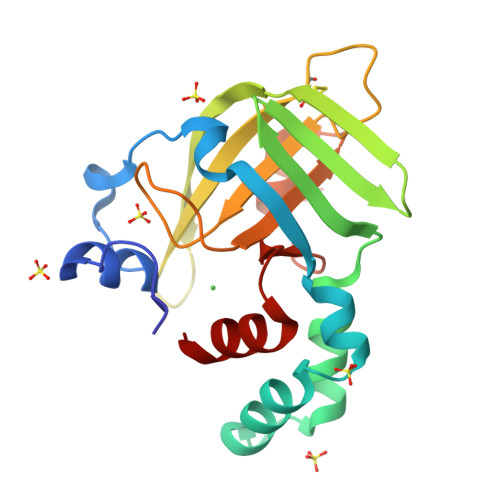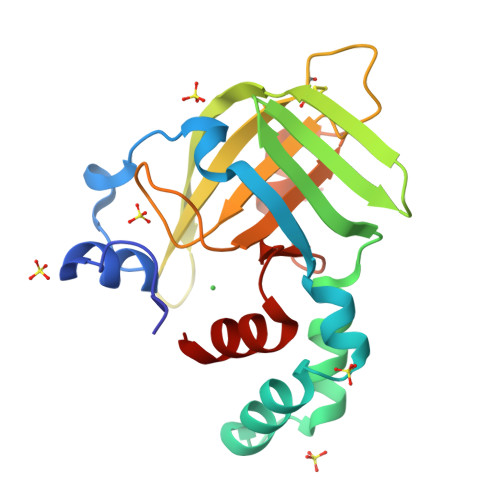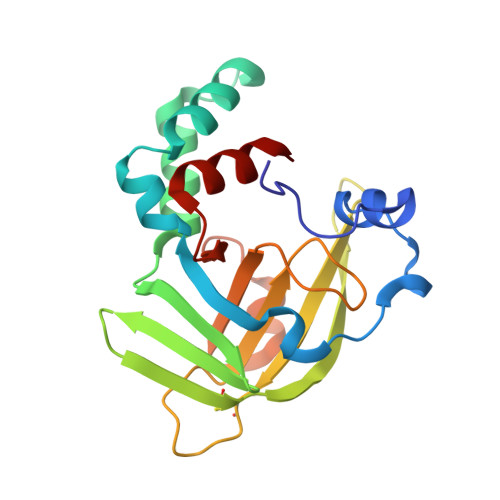Protein purification and crystallization artifacts: The tale usually not told.
Niedzialkowska, E., Gasiorowska, O., Handing, K.B., Majorek, K.A., Porebski, P.J., Shabalin, I.G., Zasadzinska, E., Cymborowski, M., Minor, W.(2016) Protein Sci 25: 720-733
- PubMed: 26660914
- DOI: https://doi.org/10.1002/pro.2861
- Primary Citation of Related Structures:
4TNN, 4YYC, 4ZNZ - PubMed Abstract:
The misidentification of a protein sample, or contamination of a sample with the wrong protein, may be a potential reason for the non-reproducibility of experiments. This problem may occur in the process of heterologous overexpression and purification of recombinant proteins, as well as purification of proteins from natural sources. If the contaminated or misidentified sample is used for crystallization, in many cases the problem may not be detected until structures are determined. In the case of functional studies, the problem may not be detected for years. Here several procedures that can be successfully used for the identification of crystallized protein contaminants, including: (i) a lattice parameter search against known structures, (ii) sequence or fold identification from partially built models, and (iii) molecular replacement with common contaminants as search templates have been presented. A list of common contaminant structures to be used as alternative search models was provided. These methods were used to identify four cases of purification and crystallization artifacts. This report provides troubleshooting pointers for researchers facing difficulties in phasing or model building.
Organizational Affiliation:
Department of Molecular Physiology and Biological Physics, University of Virginia School of Medicine, 1340 Jefferson Park Avenue, Jordan Hall, Room 4223, Charlottesville, Virginia, 22908.


















